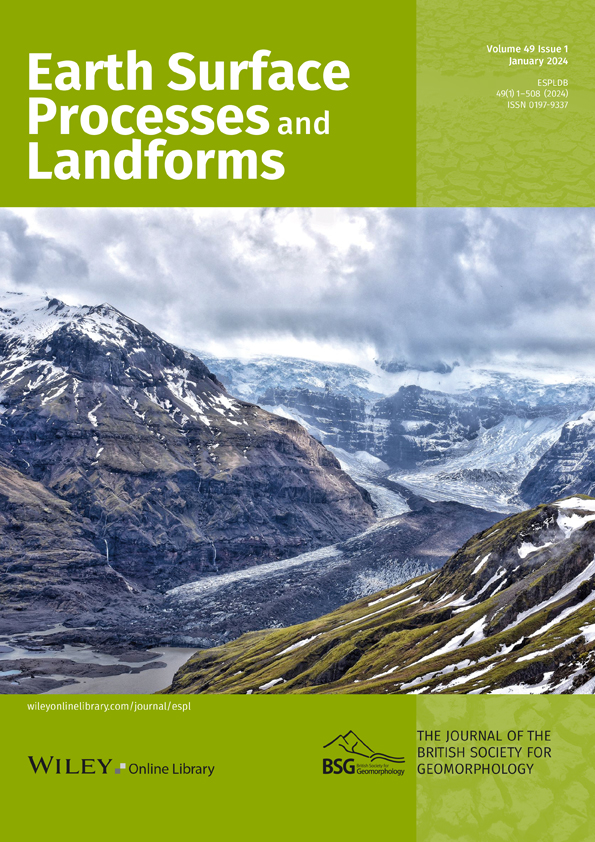Soil erosion and nutrient loss due to changes in rainfall intensity under different wind directions
Abstract
In nature, wind often occurs simultaneously with rainfall, causing nutrient loss in soil and water on slopes. However, the influence of different rainfall intensities combined with different wind directions on soil erosion and nutrient loss remains unclear. This study utilized wind-driven rainfall laboratory flume experiments to analyse the influence of different wind directions (windward, leeward and crosswind) and rainfall intensities (30, 60 and 90 mm h−1) with constant wind speed (5 m s−1) on slope runoff, sediment yield and the associated losses of different forms of N ( , ) and P ( -P). The response of soil erosion, N and P loss to rainfall changes with different wind directions. When the rainfall intensity was constant, runoff, sediment yield and sediment-associated total nitrogen (TN) and total phosphorus (TP) losses on slopes showed a trend of leeward > crosswind > windless > windward, whereas runoff-associated TN and TP losses showed a trend of windward > crosswind > windless > leeward. Runoff, sediment yield and sediment-associated TN and TP losses on leeward slopes were 1.09–1.17, 1.25–1.44, 1.33–1.62, and 1.40–1.66 times than windless slopes. Moreover, with constant wind direction, the runoff, sediment yield and associated N and P losses increased significantly with increasing rainfall intensity. When the rainfall intensity increased from 30 to 60 and 90 mm h−1, the runoff, sediment yield and associated TN and TP losses increased 2.02–2.28, 3.65–5.35, 3.96–34.39 and 4.28–8.45 times, respectively. The effects of rainfall on soil erosion and nutrient loss were significantly greater than those of wind. The loss of different forms of N and P associated with runoff and sediment was consistent with that of TN and TP losses. However, with an increase in rainfall intensity, the growth rates of runoff, sediment yield and associated N and P losses exhibited a gradually weakening trend for all wind directions. An increase in rainfall intensity enhanced the vertical vector force of wind-driven rainfall, which increasingly decreased the angle between the rain incidence and the normal line of the horizon; therefore, the direction of the rain erosion force gradually approached that of windless conditions.
CONFLICT OF INTEREST STATEMENT
The authors declare that they have no known competing financial interests or personal relationships that could have appeared to influence the work reported in this paper.
Open Research
DATA AVAILABILITY STATEMENT
All data will be made available to individual researchers upon request (main contact person is the correspondence author). The available data include field photographs, schematic diagram and wind-driven rain simulator calibration.




